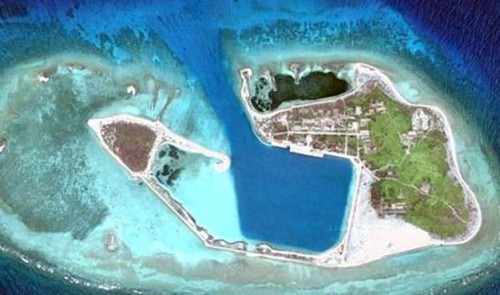Today marks the 43rd anniversary of China’s forceful seizure of Vietnam’s Hoang Sa (Paracel) archipelago.
Bui Thanh, a senior Tuoi Tre (Youth) newspaper journalist, has penned a brief, yet sharp, reflection on the events of January 19, 1974 and why he believes the day should not be remembered as when Vietnam lost Hoang Sa.
Winter, 1946. Vietnam, a young nation, entered a nationwide resistance battle to protect her independence. Off at sea, Chinese troops began to take action against the country’s sovereignty.
China, in the name of an Allied power, dispatched a naval fleet to its southern seas, mapping an 11-dotted line on the waters and claiming Chinese sovereignty over them. They ran fieldtrips and destroyed constructions, temples, and all other traces of the Vietnamese, French, and Japanese. They named the four biggest islands in Hoang Sa and Truong Sa (Spratlys) after their warships.
It was an intrusion without a single gunshot that took advantage of an Allied power disarming the Japanese.
And then the world changed.
The Chinese troops under Republic of China leader Chiang Kai-shek were defeated by the Chinese Red Army, and were eventually forced to leave the Chinese mainland for Taiwan.
The world changed, but Beijing’s ambition to exclusively occupy the East Vietnam Sea did not.
In 1956, the Chinese army sent troops from Hainan Island to occupy Phu Lam (Woody) and other islands east of Hoang Sa. Three years later, they continued to make landfall on the western islands, but were swept away by reinforced naval and marine units from the Republic of Vietnam.
By 1974, things had become much different.
The U.S. shook hands with China through agreements reached in the Shanghai Communiqué 1972. And then the U.S. started to withdraw from Vietnam through the 1973 Paris Peace Accords and the Chinese seized the opportunity to wrest Vietnam’s Hoang Sa by force.
The Republic of Vietnam’s navy force failed in their first battle at sea against Chinese troops on January 19, 1974. More than 70 soldiers died and were given a funeral in the heart of Saigon, on the 27th day of the last lunar month, before Tet (Lunar New Year).
That day has gone down in Vietnam’s history as a painful memory, when a part of the country, which ancestors had spent generations protecting, was separated from the motherland.
It has been 43 years since.
Vietnamese do not consider January 19 as the day when we lost Hoang Sa - the beloved islands that had been protected by generation after generation of men on Ly Son Island and the brave Quang region. They will forever be the natural blood and flesh of Vietnam.
It has been 43 years but we will always look to Hoang Sa in remembrance, whenever Tet is near.

























































